mobile View, to the German Version tap the flag


- Republic of Uzbekistan
- presidial republic
- own name: Ozbekiston Respublikasy
• Flags
• Historical Flags
• Meaning/Origin of the Flag
• Coat of Arms
• Meaning/Origin of the Coat of Arms
• Aircraft Roundel
• Regional Flags:
Karakalpakistan
• Map
• Numbers and Facts
• History
• Origin of the Country's Name
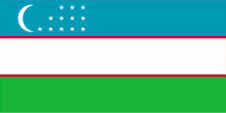
since 2001,
National, state and merchant flag,
ratio = 1:2,
Source, by: Flags of the World





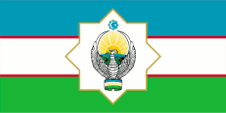
Flag ot the President,
ratio = 1:2,
Source, by: RainbowSilver2ndBackup,
Public domain, via Wikimedia Commons



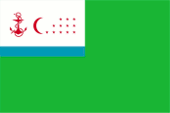
Flag ot the Navy (Uzbek River Force),
ratio = 2:3,
Source, by: НССPПВУ,
Public domain, via Wikimedia Commons



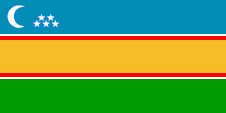
Karakalpakstan:
National flag since 1990,
ratio = 1:2,
Source, by: Wikipedia (D)


 → Karakalpakstan ←
→ Karakalpakstan ←

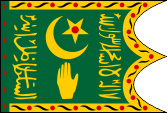
19th–20th century,
Flag of the Khan of Bukhara,
Source, by: Flags of the World
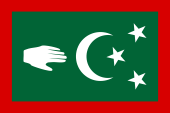
19th–20th century,
Flag of the Khanate of Bukhara (?),
Source, by: Flags of the World



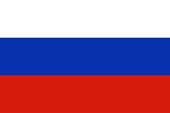
1876–1920,
Flag of Russia,
ratio = 2:3,
Source, by: Wikipedia (DE)





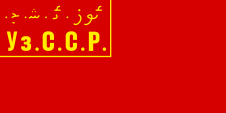
1925–1927,
Flag of the Uzbek Soviet Socialist Republic,
ratio = 1:2,
Source, by: World Statesmen



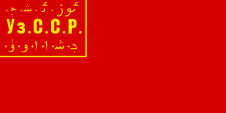
1927–1929,
Flag of the Uzbek Soviet Socialist Republic,
ratio = 1:2,
Source, by: World Statesmen



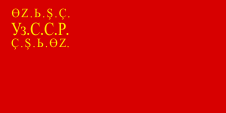
1929–1931,
Flag of the Uzbek Soviet Socialist Republic,
ratio = 1:2,
Source, by: World Statesmen



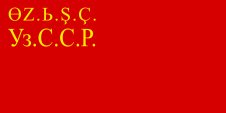
1931–1934,
Flag of the Uzbek Soviet Socialist Republic,
ratio = 1:2,
Source, by: World Statesmen



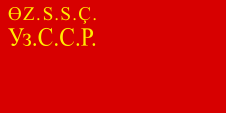
1934–1935,
Flag of the Uzbek Soviet Socialist Republic,
ratio = 1:2,
Source, by: World Statesmen



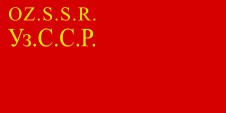
1935–1937,
Flag of the Uzbek Soviet Socialist Republic,
ratio = 1:2,
Source, by: World Statesmen



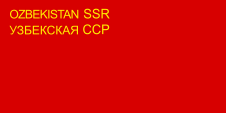
1937–1939,
Flag of the Uzbek Soviet Socialist Republic,
ratio = 1:2,
Source, by: World Statesmen



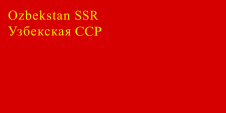
1939–1941,
Flag of the Uzbek Soviet Socialist Republic,
ratio = 1:2,
Source, by: World Statesmen



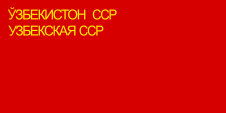
1941–1952,
Flag of the Uzbek Soviet Socialist Republic,
ratio = 1:2,
Source, by: World Statesmen



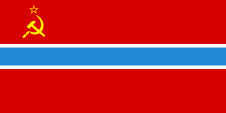
1952–1991,
Flag of the Uzbek Soviet Socialist Republic,
ratio = 1:2,
Source, by: World Statesmen,
Flaggen und Wappen



look also:
• Flag history of the soviet republics of the USSR
• Karakalpakstan (Karakalpakia)

The current flag of Uzbekistan was introduced on 18th of November in 1991, according to other sources on 30th of September in 1991. It shows three horizontal stripes in light blue, white and green, with narrow red dividing stripes in between. In the light blue stripe, close to the mast, a white crescent and twelve white, five-pointed stars. The crescent moon and the stars symbolise Islam. The stars form, highly stylised, the word "Allah" in Arabic letters. The crescent also symbolises the birth of a new nation and the stars stand for spirituality and divinity and for the traditional 12-animal calendar. The colour blue symbolises the sky and clear water, it is reminiscent of the flags of Timur (Tamerlan), and refers to the ancestry of the people, as blue is the colour of the Turkic and Mongolian nations. White is the traditional Uzbek symbol of peace and happiness. The green colour is a symbol of nature, new life and good harvests. Red, on the other hand, symbolises vitality. The shades of the colours of the flag seem to be defined, at least the following colour specifications can be found, at least as colour values in the hex colour spectrum: Blue = #009AB6, Red = #CF0921, Green = #18B637. The following Pantone colour values can be derived from this: Blue = Pantone 632 c, Red = Pantone 1795 c and Green = Pantone 361 c. The flags, which were used in the Soviet era corresponded all to the same pattern as it was intended for the Soviet Republics: frequently only a single-coloured red bunting with a golden inscription, showing the name of the country. Sometimes only as a shortcut, sometimes the full name, sometimes only in Russian or even multilingual. From about 1937 hammer, sickle and star were sometimes added. From about the mid-50s multicolored flags were introduced for the republics of the Soviet Union, whose knitting patterns had to be taken over by the subordinated autonomous Soviet republics.
Source:
Flags of the World,
Wikipedia (TR),
Wikipedia (DE),
Volker Preuß

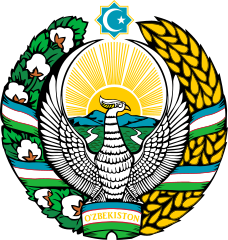
since 1992,
Coat of arms of Uzbekistan,
Source, by: See page for author,
Public domain, via Wikimedia Commons

1978–1991,
Coat of arms of the Uzbek Soviet Socialist Republic,
Source: Jam123, CC0, via Wikimedia Commons

The coat of arms of Usebekistan was introduced on 2nd of July in 1992. It shows the legendary silver bird "Khumo" with outstretched wings. It symbolises happiness and the longing for freedom. It also bears the names "Daulat-ku-i" → "state bird" and "Kultubulgan" → "sun bird". In the background, a sunrise scene in a green mountain range, with silver rivers and a blossoming valley. All of this is surrounded by a cotton plant and golden ears of grain, both entwined with ribbons in the colours of the flag. Above it is a blue octagon with a golden border, a golden crescent and a golden star in the centre. It symbolises the strengthening and consolidation of the Republic. Below is a banner in the colours of the flag, with the name of the state in Latin letters on the white field. Until the mid-1990s, only Cyrillic letters were used here. Currently, both writing systems are in use in the country.
Source: Flaggen und Wappen der Welt,
Wikipedia (DE),
Volker Preuß


Aircraft Roundel,
Source, by: Wikipedia (EN)

Location:
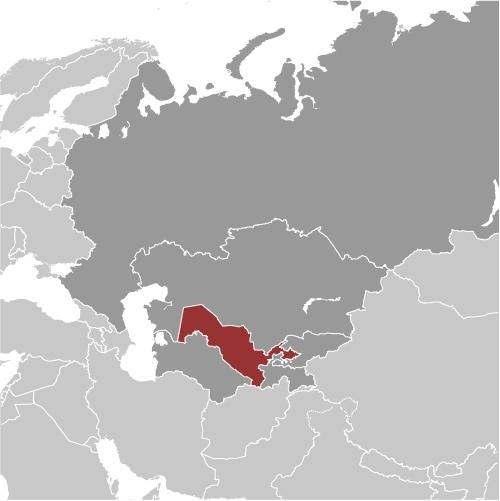
Source: CIA World Factbook
Map of the country:
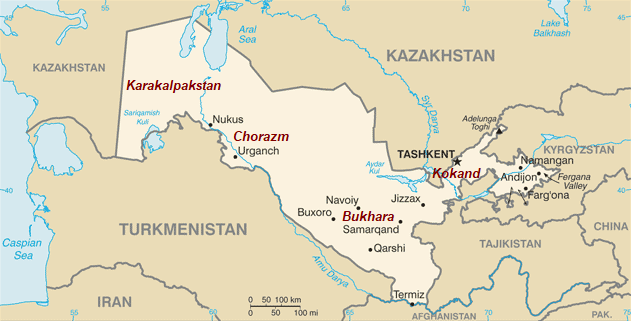
Added clickable geographical names appear in dark red,
Source: CIA World Factbook, modyfied by: Volker Preuß

Area: 173.351 square miles
Inhabitants: 36.000.000 (2022), thereof 71% Uzbeks, 5% Russians, 5% Tadjiks, 4% Karakalpaks, 3% Kazakhs, 3% Tatars, 2,5% Koreans, furthermore Turkmans, Uigurs, Germans (ca. 8.000), Armenians, Meskhets, Azerbaijani and Kurds
Religions: 90% Muslims (mostly Sunnis), 8% Russian Orthodox
Density of Population: 208 inh./sq.mi.
Capital: Tashkent, 2.571.668 inh. (2020)
official Language: Uzbek, in Karakalpakstan as well Karakalpakian
other Languages: Tadjik, Russian
Currency: 1 Som (UZS) = 100 Tiyin
Time Zone: GMT + 5 h
Source:
Wikipedia (DE)

6th century B.C. · country Khorazm (belonging to te Empire of the Medes) and country Sogdia (later Maverannah, Bukhara)
6th century B.C. · the entire region is part of the Persian Empire
4th century B.C. · the entire region is part of the empire of Alexander the Great
3rd century B.C. · Sogdia belongs to the Greek-Bactrian empire
5th century A.D. · immigration of Turkic peoples: Kyrgyz, Turkmen
8th century A.D. · Islamization by invading Arabs, Khorezm and Sogdiana (Maverannah) become a part of the Arab Caliphate
10th to 11th century · Khorazm is a part of the Empire of the Ghaznawids, Maverannah is pa art of the Empire of the Karakhanids
1089 · conquest by the Seljuk Turks, part of the Seljuk Empire
12th century · Maverannah comes under the influence of Khorazm and of the Empire of Karakitai
1221 · conquest by the Mongols, to the empire of Genghis Khan, after the disintegration of his empire Khorazm belongs to the Empire of the Golden Horde, Maverannah belongs to the Empire of Chagatai
1370–1405 · to the Empire of Timur (Tamerlane)
15th century · State of Maverannah (including Khorazm)
15th century · migration of Uzbeks (named after Ösbek Khan, a ruler of the Golden Horde) under the leadership of Abulkhair Khan
1500 · Shaybani Khan (grandson of Abulkhair) conquers Bukhara and Samarkand and takes over the rule in Maverannah, establishment of the Khanate of Bukhara
1511 · conquest of Khorezm by the Uzbeks under Ilbars Khan, establishment of the Khanate of Khorazm (Khiva)
about 1710 · the Uzbek Shah-Rukh estblishes the Khanate of Kokand in the Ferghana Valley by separation of the Khanate of Bukhara
1865–1876 · gradual Russian conquest, founding of the Russian Gouvernement of Turkestan
1868 · conquest of the Khanate of Kokand by Russian troops, Kokand becomes a vassal of Russia
March to May 1873 · conquest of Khiva by Russia
19th of February 1876 · Russia annexes Kokand, annexation to the Russian Gouvernement of Turkestan
1917 · Bolshevik coup in Russia
April 1918 · Bolsheviks proclaim the Turkestan Autonomous Soviet Republic
1918–1923 · civil war
24th of September 1920 · proclamation of the Turkestan Autonomous Soviet Socialist Republic
30t of December 1922 · the Turkestan Autonomous Soviet Socialist Republic as part of Soviet Russia becomes a part of the Soviet Union
27th of October 1924 · dissolution of the Turkestan Autonomous Soviet Socialist Republic, distribution in the Soviet republics of Kyrgyzstan, Uzbekistan and Turkmenistan, cede of territory to the Kazakh Autonomous Soviet Socialist Republic – in this way establishing of Uzbekistan as Uzbek Soviet Socialist Republic (Uzbek SSR)
1925 · the Uzbek SSR becomes a member of the Union of Soviet Socialist Republics (USSR)
5th of December 1929 · separating of Tajikistan from Uzbekistan as a separate Soviet Socialist Republic
1936 · the Karakalpak Autonomous Soviet Socialist Republic (Karakalpak ASSR), becomes separated from the RSFSR (Soviet Russia) and becomes annexed to the Uzbek Soviet Socialist Republic
20th of June 1990 · Uzbekistan declares its sovereignty
31st of August 1991 · proclamation of the Republic of Uzbekistan
21st of December 1991 · Uzbekistan joines to the CIS, the final demise of the Soviet Union, de facto independence for Uzbekistan
1993–1996 · armed riots in the Ferghana Valley
2005 · armed riots in the Ferghana Valley
Source:
Atlas zur Geschichte,
Wikipedia (D),
World Statesmen,
Discovery '97,
Volker Preuß

The Uzbeks and the neighboring Kazakhs have common roots, they were a Turkic people from Turko-Mongol tribes, and they came from western Siberia to Central Asia. In the 14th Century, these people belonged to the Empire of the Golden Horde, which in its final stage lived to see once a golden age under Ösbek Khan, a descendant of Genghis Khan. The tribes united under his name. The Uzbek Abulkhair Khan tried to unite the tribes of the Uzbeks and to establish a separate state in 1430. Supporters of the descendants of Genghis Khan rejected this plan and established as Kazakhs a separate kingdom. However, Shaybani Khan, the grandson of Abulkhair Khan established successfully the Empire of the Uzbeks by conquer of Bukhara and Samarkand, and in this way the Khanate of Bukhara was founded.
Source: Handbuch der geographischen Namen, Die Völker der Erde, Volker Preuß


![]()



























